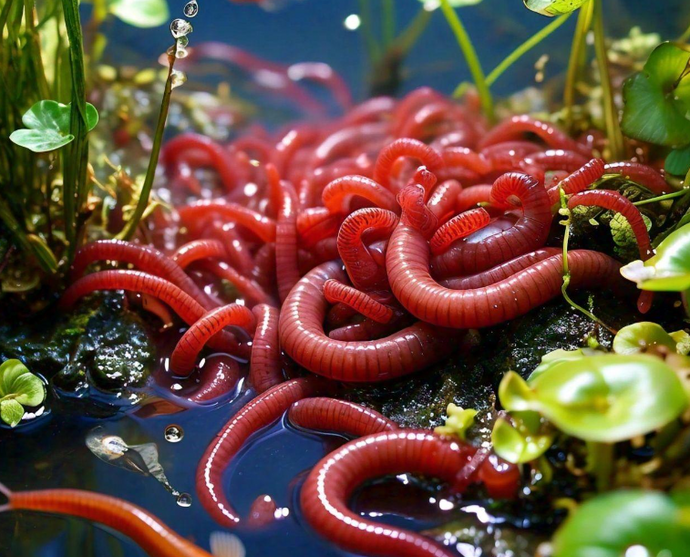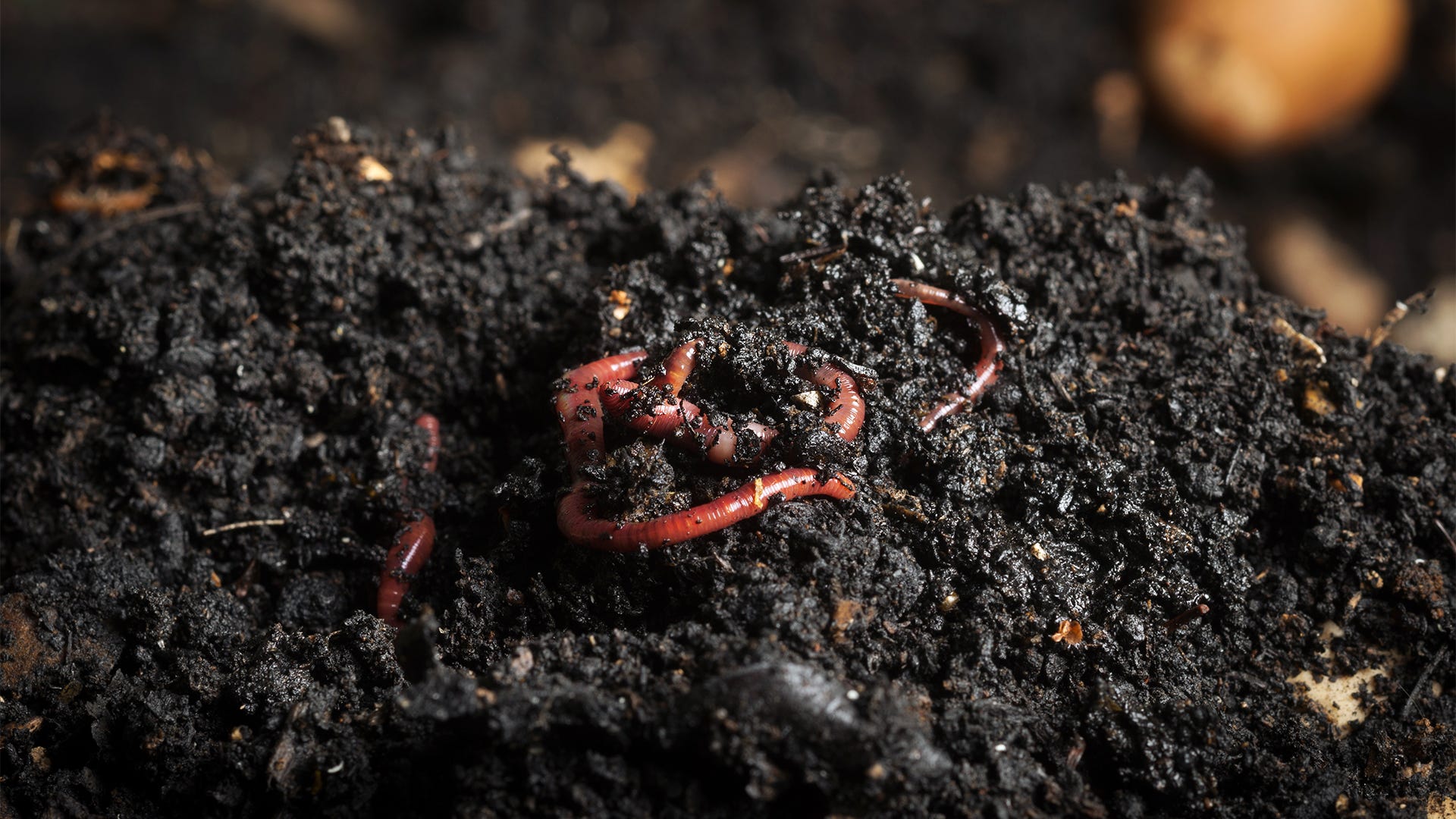Live red wigglers: How to begin composting
Live red wigglers: How to begin composting
Blog Article
The Duty of Red Wigglers in Sustainable Horticulture
The assimilation of red wigglers into sustainable horticulture techniques provides a compelling technique to boosting dirt health and wellness and lowering natural waste. The implications of utilizing red wigglers extend beyond plain composting; their duty in forming a much more sustainable future warrants a deeper expedition of their benefits and sensible applications.
Recognizing Red Wigglers
Red wigglers, medically called Eisenia fetida, are a species of earthworm renowned for their function in lasting horticulture and composting methods - red wigglers. These worms thrive in breaking down natural matter, making them specifically reliable in converting kitchen area scraps and backyard waste right into nutrient-rich compost. Unlike conventional earthworms, red wigglers have a greater resistance for varying moisture degrees and can thrive in environments with abundant organic material
(red wiggler worms for sale near me)Typically, red wigglers are smaller than their earthworm counterparts, typically measuring between 3 to 4 inches in size. They possess a reddish-brown pigmentation and have a segmented body structure that aids in their burrowing and feeding activities. These organisms are hermaphroditic, meaning each specific has both male and female reproductive body organs, which enables efficient population development under ideal problems.
The environment choices of red wigglers consist of moist, dark settings abundant in organic content, such as compost containers or worm farms. Their ecological duty extends past composting; they are important in aerating the soil and facilitating nutrient biking, which inevitably adds to healthier garden ecosystems. red wigglers. Comprehending the biology and habits of red wigglers is essential for those seeking to carry out reliable vermicomposting in lasting horticulture
Advantages of Vermicomposting
Vermicomposting offers various advantages that enhance sustainable horticulture practices and add to ecological health and wellness. Among the primary benefits is the improvement of natural waste right into nutrient-rich garden compost, which boosts soil structure and fertility. The spreadings generated by red wigglers are loaded with valuable microbes and vital nutrients, making them a superb natural plant food.
Furthermore, vermicomposting significantly decreases garbage dump waste. By diverting kitchen scraps and yard waste from landfills, this technique not only reduces methane emissions-- a powerful greenhouse gas-- however also advertises a circular economic situation, where waste is repurposed as a resource.
One more benefit is the enhancement of dirt aeration and water drainage (red wigglers). The burrowing task of red wigglers produces networks in the soil, permitting air and water to pass through more quickly, therefore promoting a much healthier root system for plants
Additionally, vermicomposting can be done on a tiny scale, making it accessible for urban garden enthusiasts and those with limited space. This approach urges environmental stewardship and awareness, as individuals end up being a lot more involved with their waste monitoring methods. Inevitably, vermicomposting stands for a sustainable, reliable, and eco-friendly approach to horticulture that benefits both plants and the planet.
Just How to Start Vermicomposting
Beginning your very own vermicomposting system can be a gratifying endeavor that enhances your sustainable horticulture practices. To start, choose a proper container, such as a plastic bin or wooden box, with great drain and air flow. The size will depend on the quantity of cooking area scraps you create; a bin of 10-14 gallons commonly suffices for a home.
Next, prepare the bed linens product. Shredded newspaper, cardboard, and coconut coir are superb choices, supplying a comfy environment for the red wigglers. Objective for a bed linen deepness of regarding 4-6 inches, which ought to be moist however not soggy.
Once the bed linen is developed, present your worms. Red wigglers (Eisenia fetida) are one of the most suitable for composting. Begin with about one extra pound of worms for each 2-3 extra pounds of cooking area scraps weekly.
Begin including cooking area waste, avoiding meat, milk, and oily foods, as these can attract pests and develop smells. Frequently keep track of the bin's wetness degrees and temperature, guaranteeing it continues to be within the optimal range for worm task. With these first actions, you'll be well on your way to producing nutrient-rich compost for your garden.
Preserving a Healthy Worm Container
A thriving worm bin requires constant treatment and attention to keep an optimum environment for the red wigglers. Secret aspects to keep track of consist of dampness degrees, temperature level, and food supply. Preserving a wetness level similar to a wrung-out sponge is essential; too much water can bring about anaerobic conditions, while too little can Discover More Here dry out the worms.
Temperature level is likewise crucial, as red wigglers grow in a variety of 55 to 77 levels Fahrenheit. Severe temperatures can stress the worms, possibly leading to death. Placing the container in a climate-controlled area or utilizing shielding materials can assist control temperature level fluctuations.

Last but not least, aeration is important. Frequently turning the bed linens and utilizing a fork or shovel can protect against compaction and advertise air movement, making sure a healthy and balanced, growing environment for the red wigglers. By sticking to these practices, gardeners can preserve an efficient worm container that supports lasting horticulture initiatives.
Influence On Soil Health And Wellness
Enhancing soil health and wellness via the use of red wigglers is an essential facet of lasting gardening. By consuming organic issue, red wigglers break down intricate products right into simpler substances, a process understood as vermicomposting.

(Charlotte Worm Farms)Research studies have revealed that soils improved with worm spreadings exhibit enhanced microbial task and improved fertility, leading to higher plant yields. By incorporating red wigglers into horticulture techniques, garden enthusiasts not just improve their dirt but also add to an extra sustainable farming system, emphasizing the interconnectedness of dirt health and wellness and environmental stewardship.

Conclusion
In verdict, red wigglers considerably contribute to lasting horticulture via their efficient vermicomposting practices. By promoting waste decrease and fostering a round economic climate, red wigglers emerge as crucial elements in eco-friendly horticulture initiatives, emphasizing their crucial function in ecological sustainability.
Report this page